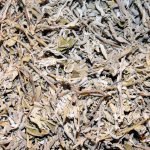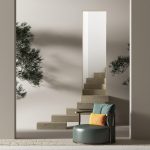Vis Medicatrix Naturae Quercetin, Vitamin C, and Beyond
Helping Patients Through the Allergy Season
HOLLY LUCILLE, ND, RN
For both patients and practitioners, finding an effective allergy treatment that doesn’t cause side effects can seem like trying to solve an unsolvable mystery. Whether you have patients who deal with intense allergies during a short season or patients who suffer for months on end, you’ll want to give them options that don’t leave them feeling jittery, sluggish, or sleepy. Fortunately, solutions do exist.
An Example of Mistaken Identity
The discomfort and symptoms caused by allergies are due to a case of mistaken identity. The immune system is really trying to help, but it doesn’t recognize that there isn’t an actual threat or how to respond proportionally when it comes to allergies. The basic role of the immune system is to differentiate “self” from “not self” and destroy anything that might be harmful (such as bacteria or viruses), while leaving our own tissues alone. However, in the case of allergic responses, the immune system overreacts and goes into a “red alert” over something that would otherwise be innocuous.
In an allergic response, mast cells release histamine in response to an antigen. The histamine reaction creates inflammation, which causes swelling and itching. For those dealing with these symptoms, it can feel like the options for treatment are limited. That’s because many of the drugs used to treat allergies can have side effects that include the very insomnia, dizziness, jitteriness, nausea, increased blood pressure, dry mouth, or fatigue that your patients are (understandably) trying to avoid.
Certainly, using air purifiers, thoroughly cleaning (or removing) carpets and heavy curtains, and closing windows during times of increased exposure can make a difference. These are good, sensible tips to share with your patients. But these suggestions are rarely enough to eliminate the problem. That’s why proposing effective, natural options that can mitigate the body’s allergic response and reduce symptoms can help patients get through the season without having to choose between suffering from their allergies or dealing with the unwanted side effects of their medications.
The Case for Quercetin
While quercetin may not be quite as well-known to your patients as other immune strengthening ingredients, it is quite common in many foods. In fact, this polyphenolic flavanoid is abundant in apples, grapes, onions, teas, tomatoes, and various herbs, many of which are part of virtually everyone’s daily diet.1
A diet rich in quercetin-containing foods can help people stay healthy. After all, the great variety of nutrients from whole foods is simply going to be better than the lack of nutrients from a diet of processed or refined foods. Research, however, also supports using a concentrated form of quercetin for moderating allergic responses and respiratory concerns. For example, quercetin inhibits mast cell and eosinophil activation, reduces histamine release, relaxes the trachea, and reduces inflammatory compounds in cells that line the insides of the lungs. It can also balance the production of immunoglobulin E (IgE) production in the lymph nodes, preventing – or at least moderating – the inflammatory effects of IgE in tissues throughout the body.1,2
In one study, human peripheral-blood CD4+ T cells were treated with quercetin for 24 hours. When compared to controls, treated cells inhibited interleukin (specifically IL-5 and IL-13) production by suppressing their transcription and messenger RNA expression.3 Again, it’s not that an immune response from the body is bad. It simply needs to fit the occasion. Because quercetin addressed the factors normally responsible for allergic reactions, researchers conducting this study concluded that it could be a valuable ally in the fight against the symptoms of allergic rhinitis.
Some researchers also consider that quercetin may eventually be used as a natural bronchodilator for treating chronic obstructive pulmonary disease (COPD) and asthma. One study on cells from COPD patients found that quercetin may make corticosteroid therapy for COPD more effective when patients develop corticosteroid resistance.4 In addition, quercetin’s ability to inhibit mast cell release of pro-inflammatory cytokines IL-6 and tumor necrosis factor was superior to that of cromoglicic acid (cromolyn sodium), a drug commonly used for the prevention and treatment of allergic rhinitis and asthma.1,5
Finally, quercetin has been shown to balance the response of T-helper cells and decrease inflammatory cytokine activity and leukotriene creation, making it potentially valuable for treating a variety of autoimmune conditions, respiratory reactions, and atopic dermatitis as well.1,6
The Vitamin C Connection
By now, it’s almost a cliché that vitamin C is associated with bolstering the immune system. Both patients and practitioners can be forgiven for not realizing the full value of this very common nutrient. But vitamin C’s well-deserved status as an antioxidant includes its critical role in modulating allergic or immune responses. Its ability to scavenge cellular reactive oxygen species (ROS) allows it to intercept or preempt the ROS-required signals that induce pro-inflammatory cytokines.7
With its multitude of duties, vitamin C is in high demand by tissues throughout the body, so it’s best to have a consistent dosage of at least 200 mg per day for ideal immune responses. I would recommend patients enter an allergy season with that level before symptoms begin in order to help prepare their system for the challenges ahead.8
The Synergy of Quercetin and Vitamin C
A randomized, double-blind clinical study found that a combination of quercetin and vitamin C was more effective in reducing C-reactive protein levels and the inflammatory marker IL-6 than either nutrient used alone.9 The individuals in this study were non-professional athletes who, during their workouts, typically generated a lot of potential free radical and inflammatory damage. Granted, this study does not address allergy concerns, but it illustrates a good point about the duo of quercetin and vitamin C working together as supplemental nutrients (probably much the same way they do when found in foods).
Perhaps both nutrients work better together than separately because vitamin C regenerates quercetin. Once quercetin becomes oxidized during its work in the body, it splits into metabolites that can be recycled by other antioxidants (like ascorbate) back into quercetin, so it prevents free radical damage once again.9 Hence, vitamin C can help make quercetin more effective.
Bolstering Bioavailability Is Key
Like many botanical nutrients, quercetin can benefit from an added push to make it more bioavailable right from the beginning. Gamma-cyclodextrin may be an answer to the issue of quercetin’s absorbability.
Gamma-cyclodextrin is an oligosaccharide that envelops fat-soluble nutrients in an open-ended microscopic structure, described as “bucket-shaped” or as a “truncated cone.”10 The exterior of this molecule is water-soluble, which allows it to escort ingredients through intestinal walls for better absorption.10 Essentially, it gives a fat-soluble nutrient the absorption qualities of a water-soluble one.10
Other nutrients that become even more useful when paired to gamma-cyclodextrin include coenzyme Q10 (CoQ10), propolis, and red ginseng. In fact, in the case of CoQ10, absorption with gamma-cyclodextrin is increased by as much as 800 percent!11
Recent clinical work shows that the addition of gamma-cyclodextrin to red ginseng appeared to improve the herb’s efficacy in improving energy, stamina, and mental clarity of individuals dealing with post-viral fatigue. In this study, the combination of red ginseng and gamma-cyclodextrin showed similar results to a standard encapsulated form of the same botanical – except at only half of the dosage.12
Other work with caffeic acid phenethyl ester (CAPE), a component of propolis, found that the compound’s anti-tumor activity was greatly enhanced when it was combined with gamma-cyclodextrin.13 The authors concluded this result was most likely because the pairing with gamma-cyclodextrin made the polyphenol-rich CAPE more stable, which made it less likely degrade into caffeic acid.13
Aside from absorption enhancement, gamma-cyclodextrin has health-promoting properties all on its own. In one study examining blood sugar levels, it was shown to lower postprandial glucose by up to 47%.14 More research is needed to determine other potential benefits, but based on current data, gamma-cyclodextrin can be useful by itself, or in formulations where maximizing the bioavailability fat-soluble nutrients is a high priority.
A 5-LOX Blocker
The use of Boswellia serrata (bosswellia) resin dates back thousands of years in Ayurvedic practice, and in recent decades, the herb’s mechanisms of action have become the subject of intensive study. While boswellia affects multiple pathways in the body, it is especially adept at modulating the 5-lipoxygenase (5-LOX) pathway. Along with many conditions, especially autoimmune diseases, 5-LOX inflammation is associated with allergies, asthma, and respiratory inflammation.15-18 By essentially “blocking” this pathway, bosswellia has specific potential for allergy treatment.
Research has shown that, like quercetin, boswellia can inhibit the action of mast cells and reduce histamine levels.17,18 Because boswellia is an anti-inflammatory agent, it may also reduce sinus pressure and swelling, making it useful for patients with allergic rhinitis.
Additionally, boswellia can be incorporated into a protocol for patients with asthma. In a double-blind, placebo-controlled, 6-week clinical study, boswellia was tested in 40 individuals with asthma. Their ages ranged from 18 to 75 years old and included 23 men and 17 women. Though the study was small, it does represent fairly wide demographic for both age and gender. At the end of the trial, 70 percent of those in the boswellia group showed marked improvement, including fewer attacks, less labored breathing, and a lower eosinophil count.19
In another study, boswellia was included in a group of 3 botanicals in a combination formula. In this placebo-controlled trial, 63 patients were divided into 2 groups; the first received the herbal combination (boswellia, licorice root, and turmeric root); the other received a placebo. At the end of the 4-week study, the herbal group showed a statistically significant drop in leukotriene levels and other inflammatory markers when compared to the placebo group.20
The results of studies like these are due in large part to boswellia’s actions on the 5-LOX pathway. Normally, 5-LOX activates the 4-series leukotrienes (LTB4, LTC4, LTD4, and LTE4), which are primary activators of bronchial constriction. But with the dampening effect of boswellia, both the primary response and the secondary activation are less likely to be initiated or to be as severe.21-23
Like any botanical, there are variations in the quality, preparation, and standardization of boswellia that can potentially alter its effectiveness. A key compound in Boswellia serrata is acetyl-11-keto-b-boswellic acid (AKBA).16 Some unstandardized formulations of boswellia may contain only about 2% AKBA, whereas properly standardized extracts should provide at least 10% and be filtered to remove any potential pro-inflammatory compounds.16,18
Avoiding More Serious Issues
Understandably, many patients might not consider supplemental options to alleviate allergies or other respiratory symptoms. After all, there are plenty of over-the-counter options available, and many of them appear (at least at first) to be effective – even with some expected side effects. But, beyond the drowsiness, jitters, and other tolerable side effects of conventional drugs for allergies or asthma, there are very real dangers from the anticholinergic aspects of these treatments.
One of the good reasons for the short-term use warnings for many of these drugs is their potential for more serious consequences in the future. For instance, diphenhydramine is an anticholinergic drug that blocks the action of acetylcholine in the brain. This translates into memory loss, attention deficits, and slowed motor skills. It’s not that these effects are somehow unknown. They have simply been accepted as some of the routine, unpleasant, and supposedly short-lived effects of the medication. However, current research has revealed that these conditions aren’t as benign or reversible as was once thought.24, 25 Even milder anticholinergic drugs used for at least 90 days have been found to be associated with an increased risk for dementia.26 So for these, and many other reasons, it’s in patients’ best interests for practitioners to recommend other effective alternatives, like the ones I have discussed here.
Quercetin, vitamin C, and boswellia can provide safe and effective relief to patients dealing with allergic rhinitis, asthma, and COPD during allergy season. They do this by addressing the causes of the problems – histamine release, leukotriene activity, and inflammatory cytokines that lead to itching, sneezing, and respiratory symptoms. In my experience, these simple nutrients, when properly formulated, can be a valuable addition to any seasonal allergy protocol. Beyond this, these supplements can also be useful throughout the rest of the year for those with chronic respiratory concerns.
[Refs]- Mlcek J, Jurikova T, Skrovankova S, et al. Quercetin and Its Anti-Allergic Immune Response. Molecules. 2016;21(5):623.
- Janeway CA Jr, Travers P, Walport M, et al. Immunobiology: The Immune System in Health and Disease. 5th ed. New York: Garland Science; 2001.
- Tanaka Y, Furuta A, Asano K, et al. Modulation of Th1/Th2 Cytokine Balance by Quercetin In Vitro. Medicines (Basel). 2020;7(8):46.
- Mitani A, Azam A, Vuppusetty C, et al. Quercetin restores corticosteroid sensitivity in cells from patients with chronic obstructive pulmonary disease. Exp Lung Res. 2017;43(9-10):417-425.
- Weng Z, Zhang B, Asadi S, et al. Quercetin is more effective than cromolyn in blocking human mast cell cytokine release and inhibits contact dermatitis and photosensitivity in humans. PLoS One. 2012;7(3):e33805.
- Jafarinia M, Sadat Hosseini M, Kasiri N, et al. Quercetin with the potential effect on allergic diseases. Allergy Asthma Clin Immunol. 2020;16:36.
- Cerullo G, Negro M, Parimbelli M, et al. The Long History of Vitamin C: From Prevention of the Common Cold to Potential Aid in the Treatment of COVID-19. Front Immunol. 2020;11:574029.
- Carr AC, Maggini S. Vitamin C and Immune Function. Nutrients. 2017;9(11):1211.
- Askari G, Ghiasvand R, Feizi A, et al. The effect of quercetin supplementation on selected markers of inflammation and oxidative stress. J Res Med Sci. 2012;17(7):637-641.
- Wüpper S, Lüersen K, Rimbach G. Cyclodextrins, Natural Compounds, and Plant Bioactives-A Nutritional Perspective. Biomolecules. 2021;11(3):401.
- Terao K, Nakata D, Fukumi H, et al. Enhancement of oral bioavailability of coenzyme Q10 by complexation with γ-cyclodextrin in healthy adults. Nutr Res. 2006;26(10):503-508.
- Teitelbaum J, Goudie S. An Open-Label, Pilot Trial of HRG80™ Red Ginseng in Chronic Fatigue Syndrome, Fibromyalgia, and Post-Viral Fatigue. Pharmaceuticals (Basel). 2021;15(1):43.
- Wadhwa R, Nigam N, Bhargava P, et al. Molecular Characterization and Enhancement of Anticancer Activity of Caffeic Acid Phenethyl Ester by γ Cyclodextrin. J Cancer. 2016;7(13):1755-1771.
- Asp ML, Hertzler SR, Chow J, et al. Gamma-cyclodextrin lowers postprandial glycemia and insulinemia without carbohydrate malabsorption in healthy adults. J Am Coll Nutr. 2006;25(1):49-55.
- Ammon HP. Modulation of the immune system by Boswellia serrata extracts and boswellic acids [published correction appears in Phytomedicine. 2011 Feb 15;18(4):334]. Phytomedicine. 2010;17(11):862-867.
- Ammon HP. Boswellic acids in chronic inflammatory diseases. Planta Med. 2006;72(12):1100-1116.
- Pungle P, Banavalikar M, Suthar A, et al. Immunomodulatory activity of boswellic acids of Boswellia serrata Roxb. Indian J Exp Biol. 2003;41(12):1460-1462.
- Siddiqui MZ. Boswellia serrata, a potential antiinflammatory agent: an overview. Indian J Pharm Sci. 2011;73(3):255-261.
- Gupta I, Gupta V, Parihar A, et al. Effects of Boswellia serrata gum resin in patients with bronchial asthma: results of a double-blind, placebo-controlled, 6-week clinical study. Eur J Med Res. 1998;3(11):511-514.
- Houssen ME, Ragab A, Mesbah A, et al. Natural anti-inflammatory products and leukotriene inhibitors as complementary therapy for bronchial asthma. Clin Biochem. 2010;43(10-11):887-890.
- Ammon HP, Safayhi H, Mack T, et al. Mechanism of antiinflammatory actions of curcumine and boswellic acids. J Ethnopharmacol. 1993;38(2-3):113-119.
- Sharma ML, Khajuria A, Kaul A, et al. Effect of salai guggal ex-Boswellia serrata on cellular and humoral immune responses and leucocyte migration. Agents Actions. 1988;24(1-2):161-164.
- Samuelsson B. Leukotrienes: mediators of immediate hypersensitivity reactions and inflammation. Science. 1983;220(4597):568-575.
- Collamati A, Martone AM, Poscia A, et al. Anticholinergic drugs and negative outcomes in the older population: from biological plausibility to clinical evidence. Aging Clin Exp Res. 2016;28(1):25-35.
- Fox C, Smith T, Maidment I, et al. Effect of medications with anti-cholinergic properties on cognitive function, delirium, physical function and mortality: a systematic review. Age Ageing. 2014;43(5):604-615.
- Cai X, Campbell N, Khan B, et al. Long-term anticholinergic use and the aging brain. Alzheimers Dement. 2013;9(4):377-385.
Holly Lucille, ND, RN, is a nationally recognized naturopathic doctor, educator, consultant, and television and radio host. She is the author of several books, including Creating and Maintaining Balance: A Women’s Guide to Safe, Natural, Hormone Health. An acclaimed expert in the field of integrative medicine, Dr Lucille lectures on a variety of natural health topics. Her appearances include national media programs such as Dr Oz and The Doctors. Dr Lucille believes in the science, art, and mystery of healing and has a heartfelt passion for the individual wellness of all people. Her private practice is in Los Angeles, CA.









